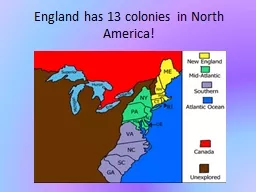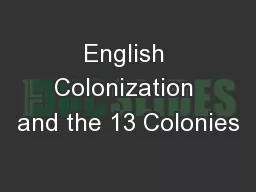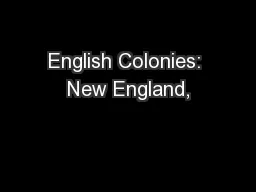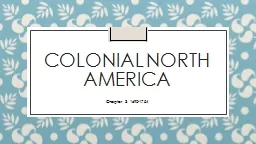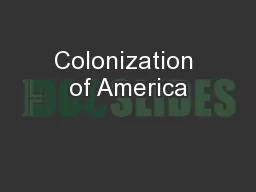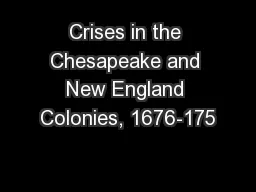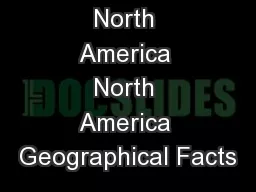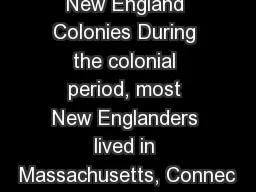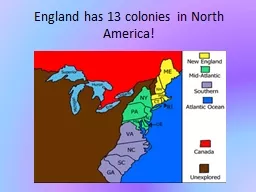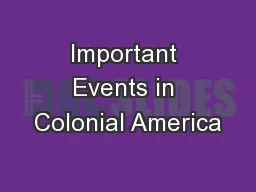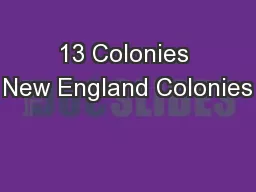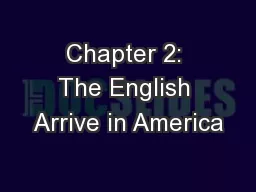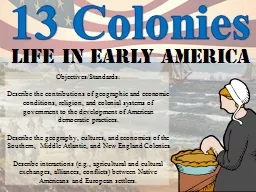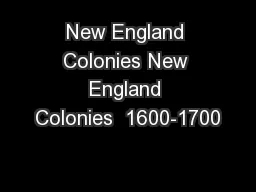PPT-England has 13 colonies in North America!
Author : lindy-dunigan | Published Date : 2018-03-08
Chapter 5 The New England Colonies Massachusetts MA Connecticut CT Rhode Island RI New Hampshire NH The Massachusetts Bay Colony Lesson 1 A City on a Hill 10 years
Presentation Embed Code
Download Presentation
Download Presentation The PPT/PDF document "England has 13 colonies in North America..." is the property of its rightful owner. Permission is granted to download and print the materials on this website for personal, non-commercial use only, and to display it on your personal computer provided you do not modify the materials and that you retain all copyright notices contained in the materials. By downloading content from our website, you accept the terms of this agreement.
England has 13 colonies in North America!: Transcript
Download Rules Of Document
"England has 13 colonies in North America!"The content belongs to its owner. You may download and print it for personal use, without modification, and keep all copyright notices. By downloading, you agree to these terms.
Related Documents

